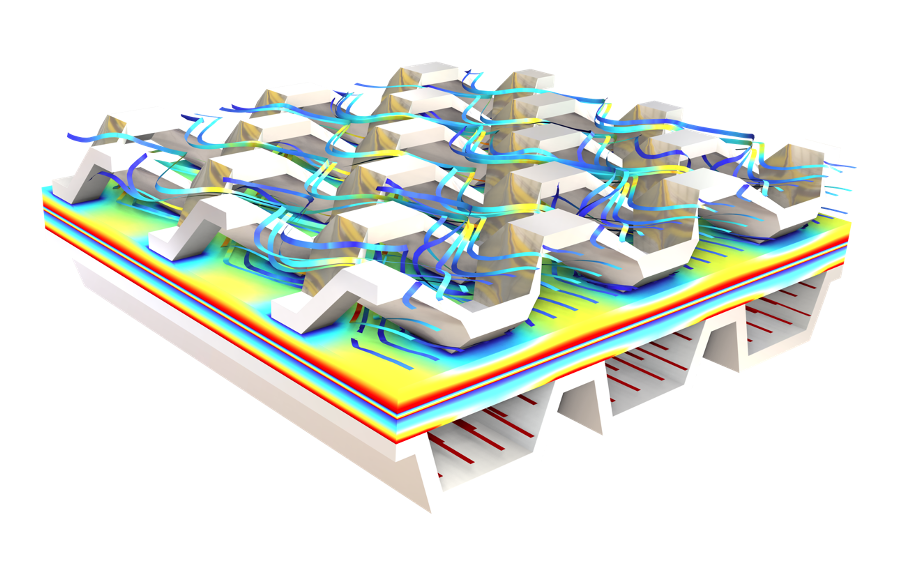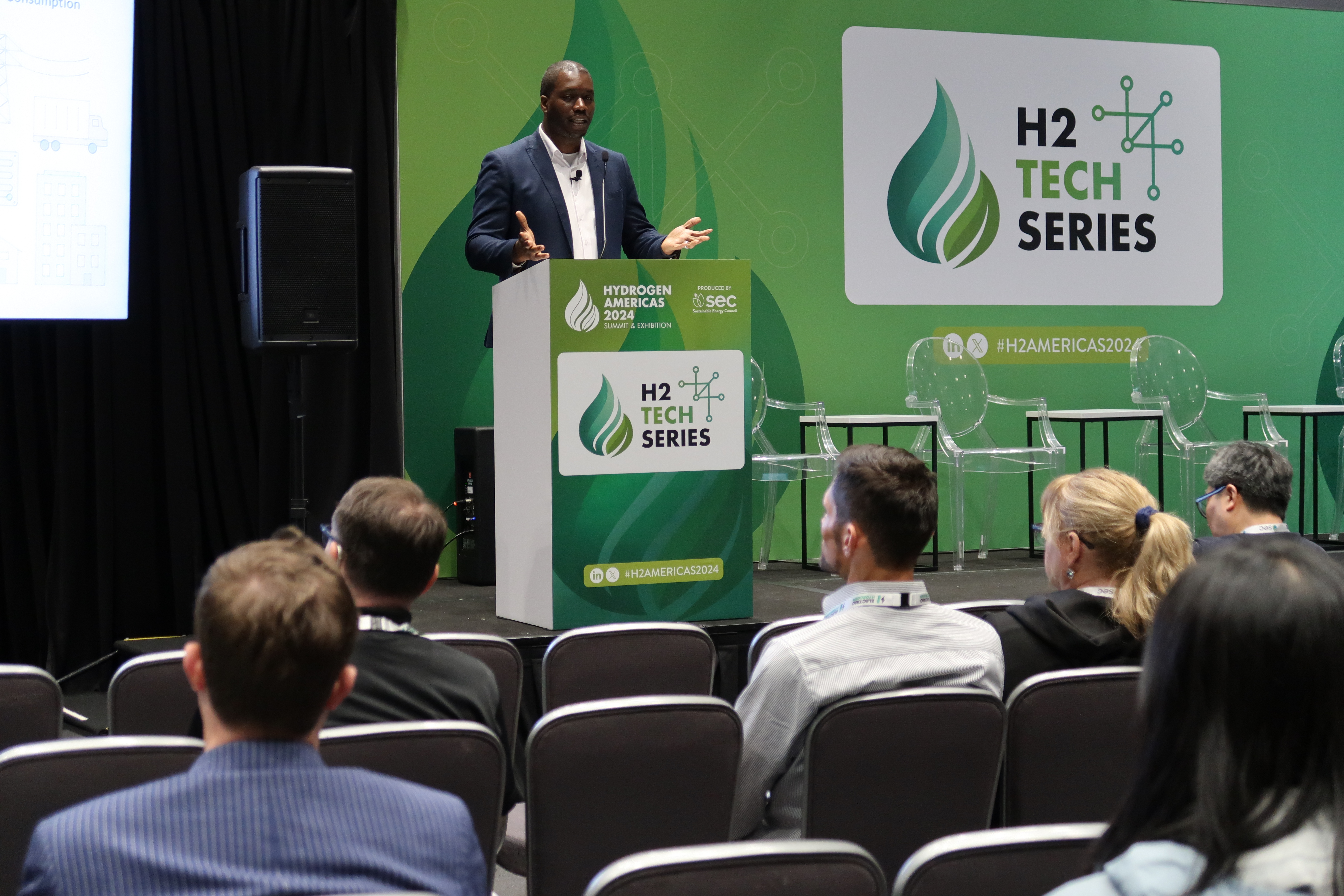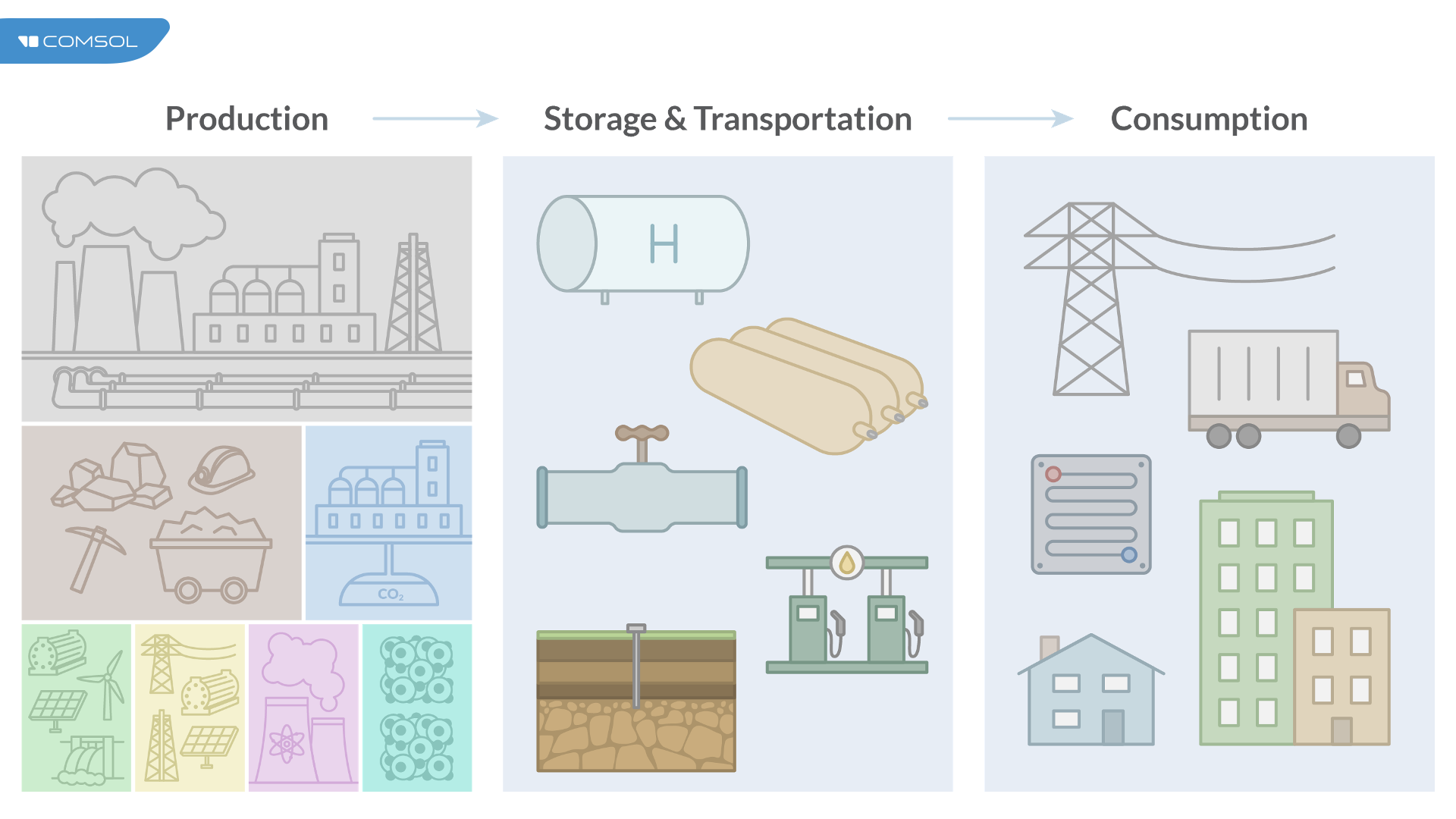
Last week, many of the major players within the hydrogen industry made their way through the monuments of Washington, D.C., to the Ronald Reagan International Trade Center for the Hydrogen Americas 2024 Summit. COMSOL partook as an attendee, exhibitor, and speaker at this year’s event, where we listened in to many of the talks, met fellow exhibitors, and discussed the latest developments in the hydrogen industry. Explore the event’s highlights below.
The Inflation Reduction Act and 45V Hydrogen Production Tax Credit
A common topic of conversation at this year’s summit was the Inflation Reduction Act and its section 45V, which established a clean hydrogen production tax credit in the United States. Many attendees and exhibitors were eager to discuss and learn more about how it can best be leveraged to help their organization, as credits such as this are the key to the world hitting any goals of net-zero greenhouse gas emissions.

The venue for the Hydrogen Americas 2024 Summit, the Ronald Reagan Building and International Trade Center in Washington, D.C. Photo by Jaakko H. This file is licensed under the Creative Commons Attribution-Share Alike 3.0 Unported license, via Wikimedia Commons.
At the summit, attendees gained valuable insights into U.S. policy and the outlook of the hydrogen industry in the near and long-term future through talks given by presenters from both the U.S. Department of Energy and U.S. Environmental Protection Agency. Many of these discussions emphasized that, while the hydrogen market is significantly more mature than it was earlier this decade, there is a need for it to rapidly transform over the next 5+ years to reach the carbon emission and hydrogen production goals for 2030 and beyond.
H2 Tech Series
An especially compelling aspect of the conference was the H2 Tech Series stage, where individual attendees, organizations, and companies pushing hydrogen forward presented throughout the event. Many of these presentations featured the latest developments and devices in fuel cell and electrolyzer technologies as well as successful strategies for making these more cost effective on an industrial scale. The talks covered nearly every link in the hydrogen value chain and gave listeners the opportunity to ask questions of some of the industry’s most knowledgeable personnel.
While many of these speakers discussed and displayed the solid oxide, polymer electrolyte membrane (PEM), and alkaline electrolyzers and fuel cells they have created, other Tech Series presenters were there with products aimed at helping these cells operate more efficiently and within a safe temperature range. The stage rarely had an intermission, giving attendees the chance to hear about hydrogen innovation throughout the entirety of the event.

An example model of a nonisothermal PEM fuel cell, created with the COMSOL Multiphysics® software.
COMSOL’s Talk on How Modeling and Simulation Benefits Hydrogen Technology R&D
On day two of the summit my colleague Toochukwu Onwuliri took the H2 Tech Series stage and presented our talk on “Modeling and Simulation Benefits Hydrogen Technology R&D”. During the talk, Onwuliri discussed the hydrogen value chain and the ways in which modeling and simulation (M&S) can be used throughout it. He covered example models of gasification, pyrolysis, electrolysis, and other production processes and explored the ability of the COMSOL Multiphysics® software to model at different scales. Onwuliri also dicussed hydrogen storage methods, a variety of fuel cell designs, and a relevant case study featuring a customer. The case study went over how Toyota Research Institute of North America developed a simulation-driven methodology for accelerating their R&D process for fuel cell flow field plates.

Throughout the talk, Onwuliri emphasized that M&S can be used for a wide variety of applications. “COMSOL has been used, can be used, and is still being used at this time for all different aspects of the hydrogen value chain,” he said.

A slide of the hydrogen value chain from Onwuliri’s talk, where he discussed how modeling and simulation can be used in all stages.
Exploring Exhibitions and Connecting with Hydrogen Experts
Dozens of exhibitors from around the globe were present, representing various stages of the hydrogen value chain. Each booth featured company representatives along with a mix of hardware, informative brochures, and giveaways. While the exhibitions were primarily focused on the offerings of their respective companies, the talks and conversations that happened around the summit tended to revolve around ensuring the success of the hydrogen industry. A majority of the attendees could agree on two things: they want the general transition to hydrogen to happen quickly and they have a deep belief in the industry.
Model examples of hydrogen production, storage, transportation, and fuel cells.
Further Reading
Want to learn more about the role multiphysics modeling can play in the hydrogen industry? Read through these blog posts:



Comments (0)